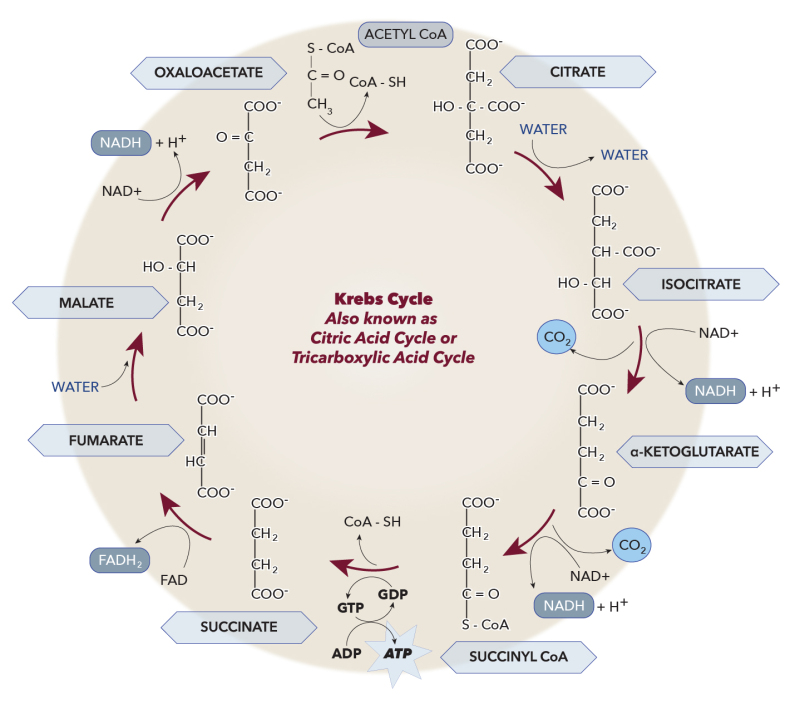|
|
|

HANS KREBS: ENERGY OF THE ORGANISM  | Simo Jelača | |
| |
detail from: KRK Art dizajn
HANS KREBS - ENERGY OF THE ORGANISM
Dr sci. SIMO JELAČA
Energy, in general, is a flow of nature. The British physicist James Prescott defined the movement of energy, with the definition: Energy of one joule (1 joule) is equal to the movement of a mass of one kilogram over a length of one meter in one second. As energy appears in different forms, it is possible to change it from one form to another (for example: heat energy can be converted into electricity and vice versa and the like).The muscles of the human body get energy from adenosine tryptophan (ATP) molecules, and that energy is obtained from carbohydrates, which a person eats. And carbohydrates are created in grains using sunlight, in the form of nuclear energy.In 1840, chemists Justus von Liebig and Julius Mayer assumed that the energy needed for life by living organisms reaches the organisms through the chemical reaction of food. Physicist Hermann von Helmholtz, an admirer of Leibig, showed that mechanical energy was previously stored in food. Thus, it was determined that each gram of carbohydrates, proteins and fats have a fixed amount of energy, always equal in all cases. One gram of carbohydrates has 4 calories (4 cal/g); gram of protein, also (4 cal/g), and one gram of fat (9 cal/g). For biochemists, the question was, which chemical processes take place during the breakdown of food in organisms. In 1937, the German biochemist Hans Adolph Krebs defined this procedure, during which energy is released, and this process was named after him the Krebs cycle. This process, according to the Krebs cycle, takes place in the organisms of all living beings on earth (humans, animals, plants, and even single-celled bacteria). Therefore, the Krebs cycle is the release of energy in all living things, and hence all life on earth is common, universal, and the Krebs cycle is, like DNA, the ancient hieroglyph of life.As food is converted into energy, in the eighteenth century, the French chemist Antoine Laurent Lavoisier (1743-1794), who is considered the father of modern chemistry, showed that organic matter burns in the body, in the presence of oxygen, which releases energy, carbon dioxide and water. Organic food molecules are predominantly composed of carbon, hydrogen and oxygen. In the example of a glucose molecule, the breakdown looks like this according to the formula:C6H12O6 + 6 O2 = 6 CO2 + 6 H2O + energyThe obtained energy can be in the form of heat, and it can also be in other forms. The reaction process of glucose with oxygen is called oxidation. Often, however, it is said that glucose in the body "burns" and releases energy. Chemists realize that the Lavoisier reaction does not take place in one step, and this was clarified a little later by Krebs.

Krebs cycle, borrowed from the internet. Don't let many readers get carried away that they need to understand all the shown processes, but this cycle is clear to chemists and looks very nice.
While going to school and studying, Krebs was a very good student and student, although his father was quite skeptical of all his children. At Göttingen University, Krebs understood chemistry and biology. He studied with Franz Knoop, who studied fat metabolism, an important element in the Krebs cycle. After graduating from university, Krebs received his MD degree in 1925, and from 1926 to 1930, he worked as an assistant to Otto Warburg at the Kaiser Wilhelm Institute in Berlin, in the field of biology. Krebs highly valued Weber as his boss. In time, as a doctor of biology, Krebs got a position at a local hospital in the town of Altona. After some time he got a position in the medical clinic at the University of Freiburg. In 1932, Krebs confirmed his cycle, and in 1933, Krebs, as a Jew, when Hitler came to power, was fired from his post and left for England. He was invited by Frederick Gowland Hopkins, offering him a position at Cambridge University. In 1935 he was accepted as a lecturer in the field of pharmacology at the University of Sheffield. At that time he was already well known for his cycle. He received the Nobel Prize in the field of physiology or medicine in 1953. During the years from 1968 to 1981, Krebs published 116 scientific papers, all in the field of biochemistry.
|

















